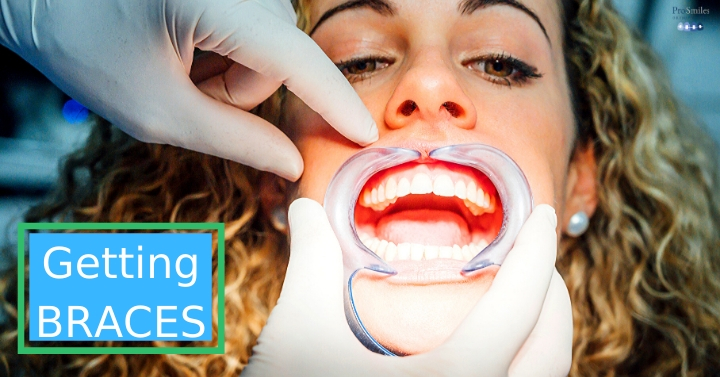7 Simple Techniques For Legacy Orthodontics
7 Simple Techniques For Legacy Orthodontics
Blog Article
The Ultimate Guide To Legacy Orthodontics
Table of ContentsThe Best Strategy To Use For Legacy OrthodonticsThe Main Principles Of Legacy Orthodontics 5 Easy Facts About Legacy Orthodontics DescribedThe Legacy Orthodontics DiariesAn Unbiased View of Legacy Orthodontics
In enhancement, we supply adjustable treatment routines, flexible settlement alternatives and a fun, satisfying experience.An orthodontist is a dental practitioner educated to identify, stop, and deal with teeth and jaw abnormalities. They deal with existing conditions and are trained to recognize issues that may create in the future. Orthodontists deal with individuals of every ages, from children to adults. People typically connect a best smile with great health and wellness.
Malocclusion, or misaligned teeth, can lead to dental problems, consisting of dental caries, gum tissue illness, and tough or agonizing chewing. Not every person is born with straight teeth. If you have a poor bite or big areas between your teeth, you may intend to speak with a dental practitioner specializing in orthodontic care.
Fascination About Legacy Orthodontics
( Picture Credit Rating: DigitalVision/Getty Images) Orthodontists make use of fixed and removable dental tools, like braces, retainers, and bands, to change the setting of teeth in your mouth. Orthodontic therapy is for dental problems, consisting of: Misaligned teethBite problems, like an overbite or an underbiteCrowded teeth or teeth that are too much apartJaw misalignmentThe goal of orthodontic treatment is to improve your bite.
A healthy and balanced bite guarantees you can consume, eat, and speak effectively. While you might think of orthodontists as mainly for kids or teenagers that need braces, they can deal with oral issues at any type of age. Orthodontists attend university, dental school, and orthodontic institution. After college graduation, they invest 2 or 3 years in an orthodontic residency program.
, but not all dentists are orthodontists. They focus on two locations: Just how to properly and securely move teeth Exactly how to properly assist growth in the teeth, jaw, and faceOnce an orthodontist has completed training, they have the option to come to be board accredited.
Legacy Orthodontics for Dummies
Malocclusion leads to tooth congestion, an askew jaw, or uneven bite patterns. Malocclusion is normally treated with: Your orthodontist attaches metal, ceramic, or plastic square bonds to your teeth.
If you have only minor malocclusion, you might have the ability to make use of clear dental braces, called aligners, as opposed to typical dental braces (https://gravatar.com/crownsuperbly9983583c20). Some individuals require a headgear to help move teeth right into line with pressure from outside the mouth. After braces or aligners, you'll require useful link to put on a retainer. A retainer is a customized device that maintains your teeth in position.
They can develop additional space in the mouth without having to pull teeth. Orthodontists utilize cords, medical screws, or plates to support your jaw bone.
You might need to see an orthodontist if you have: Crowding or otherwise adequate space for every one of your teethOverbite, when your top teeth come by your base teethUnderbite, when your bottom teeth are as well far forwardSpacing or problems with gapsCrossbite, which is when your upper teeth fit behind your base teeth when your mouth is closedOpen bite or an upright void between your front base and upper teethMisplaced midline, when the facility of your base and upper teeth do not line up Dealing with a dental malocclusion can: Make attacking, chewing, and talking easierImprove the symmetry of our face and your general appearanceEase pain from temporomandibular joint conditionsDifferent your teeth and make them easier to clean up, assisting stop dental cavity or tooth cavities It's typically a dental professional that initially notifications misaligned teeth throughout a routine exam.
Legacy Orthodontics Fundamentals Explained

Throughout your initial orthodontic appointment, you'll likely have: An oral examPhotos taken of your face and smileDental X-raysPanoramic (360 level) X-rays of your face and headImpressions to produce mold and mildews of your teethThese tests will assist your orthodontist understand how to wage your treatment. leesburg invisalign. An orthodontist is a dentist that's had training to treat your teeth and jaw
Orthodontists may perform surgical procedure, exams,X-rays,and even more to aid you achieve an extra comfy, much healthier smile. An orthodontist is concentrated on your bite, so something like a chipped tooth would certainly be managed by a dental expert. Orthodontists are dental practitioners yet not all dental professionals are orthodontists. Orthodontists are focused on your bite, or the way your teeth fit together, and the straightness of your teeth.
Ever wondered how celebrities always appear to have flawlessly aligned teeth? Orthodontists are oral professionals who concentrate on dealing with abnormalities in the teeth and jaws.
More About Legacy Orthodontics

While braces are the most generally acknowledged orthodontic therapy, orthodontists have a varied toolkit at their disposal. The particular technique chosen depends on the extent of the instance, the client's age, and private preferences. These reliable braces make use of a system of brackets adhered to the teeth and linked by cables.
Clear aligners, like Invisalign, are a prominent choice for people looking for an extra discreet treatment alternative. These removable trays are custom-made to gradually shift the teeth's setting. Headwear might be used along with dental braces or aligners to apply additional targeted forces, particularly for correcting jaw inconsistencies. In situations of narrow jaws, palatal expanders can be used to produce space for correct tooth placement.
Report this page